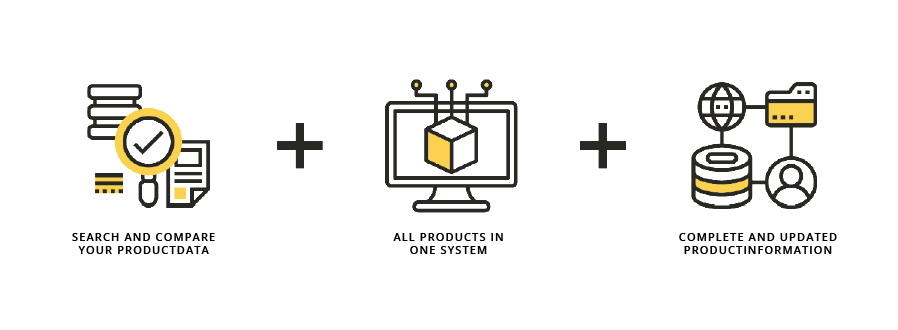Searching technical product data can be done more efficiently!

30 March 2020
As an engineer, you are continuously dealing with electrical products during the design of the electrical system. As a result, you are familiar with the fact that searching, comparing and selecting products is often a time-consuming job. Just like creating new products in the CAD database, for example. As such, we wonder if you know what is the best way to search for product data? Which search criteria yields the fastest results? And which properties should we at least store in the database when creating new products?
Nowadays
Nowadays, paper product catalogues are still on the desks of many engineering departments. Between the pages, there are usually many valuable post-its and notes on pages that are often navigated to.
Moreover, you are frequently conducting your search online, by using type and order numbers via Google or downloading from an online data pool. By doing this, you frequently notice not all data is available. Then you would like to search information from the product datasheet. Yet, you think about where you can find that sheet again? Finally, you wonder what agreements have been made, which properties are essential to store in the database and how to build up the product descriptions. Unnoticed, a lot of time passes…
Also, the product data within the organization is managed over multiple platforms and by different people. Each with their own methods and interests. As a result, the working method and processes are not standardized and creating and searching for products takes a lot of time.
.
Why bother about type numbers?
For many years, we have been looking for our products on webshops by using desired product properties. For example, when searching for a children’s bicycle at Amazon.com, we filter on the wheel diameter, colour, manufacturer and price range. As a result, only those models that meet the specified properties remain. Based on the expected delivery time, you can then choose the slightly more expensive or the cheaper one. Why do we not apply this exact same principle within the industry?
.
The result of one depends on the other
Searching based on properties is not that easy. Namely, when we rely on a filter with a product property as search criteria, we also have to be sure that this specific property is documented in the database. An accurate and reliable search result is only achievable when the data is of good quality. Right documentation and management of product data are therefore essential.
In practice, documenting product data in a good way is often more difficult than agreed in advance. Clear agreements are often made about recording this data, but that is not the issue. However, when the project pressure mounts and you have to create new products as an engineer, the completeness of filling in the data can sometimes fall short. To solve this problem, ‘Classification of data’ has been created to guarantee the data quality and to ensure that the essential product properties are fulfilled.
.
Product classification, how does it work and how does it make searching more efficient?
Classification can be seen as a framework or a guideline: the classification model. The model prescribes different product group names, with standard associated product properties. For example, take a look at the product group ‘Miniature Circuit Breaker (MCB)’. This group characterizes fixed properties fields, such as ‘number of poles’, ‘number of protected poles’, ‘rated current’ and ‘release characteristic’ belong to this product group. For high-quality data, these values must always be documented. A circulation pump in turn has very different essential product properties compared to the Miniature Circuit Breaker (MCB).
The data is stored uniformly according to a fixed structure. For this reason, classification can be regarded as an inspection of the product data. Only if it meets the set requirements, quality is guaranteed and it is good enough to be published.
The advantage of this is that everyone immediately knows in which data fields he or she has to fill in the data and can find it later. After all, the data is always displayed in the same way. Essentially, this also makes smart use of search filters possible. Generally, type numbers are no longer used to search for the rest of the product information. In turn, the required properties are used. This makes it easy to make a comparison between products that meet the specifications you specified.
In short, there are still many steps to be taken in the field of excellent product data management. At Yellax, we are aware of these problems in the market and we focus on different ways to make the search and management of electrical product data more efficient. BeeFinity has been developed with the wishes and problems from the field, where you can easily search, compare and select products through drag and drop. All product data is in one place, with the option to link it with various CAD and ERP systems.